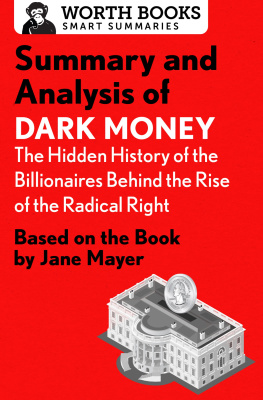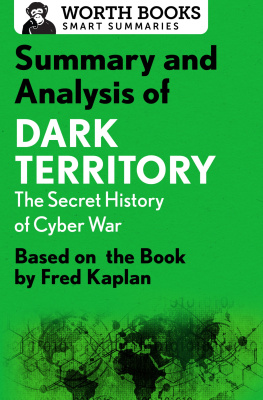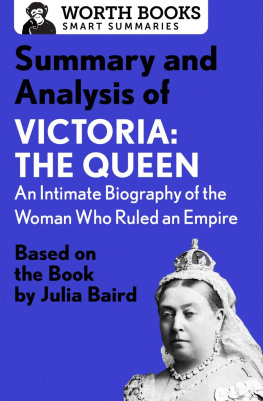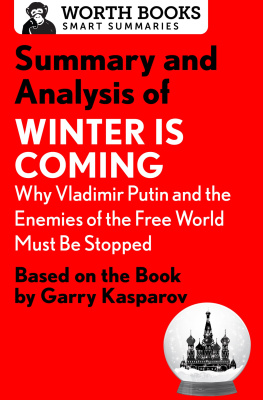Summary and Analysis of
All the Light We Cannot See
Based on the Book by Anthony Doerr

Contents
Context
All the Light We Cannot See opens with the Battle of Normandy, on August 7, 1944, and is set almost entirelyduring World War II throughout France and Germany. The storyline flashes as far backas 1934, as Hitler begins his rise to power, and closes with two final chapters setin 1974 and 2014.
The novel released in May 2014, and quickly became the unexpected fiction bestseller of the year, surprising both the author and the books publisher. The wartime setting of the story was an effective framework for highlighting the contradictory power of technology in culture and politics and the incremental growth of demagoguery. These two topics struck a nerve in America, where the 2016 presidential primary races were kicking off and debates about the power of the Internet, the manipulation of the news, and the growing populism in politics dominated the public discussion.
By the end of the year, the book had been reprinted 25 times. The combined momentum of a successful marketing campaign with independent booksellers, an enthusiastic critical response, and the announcement of a National Book Award nomination made All the Light We Cannot See one of the most popular books of 2014. The following year, the novel won the Pulitzer Prize for Fiction, the Carnegie Medal for Excellence in Fiction, and Fox Searchlight Pictures acquired the film rights.
The author, Anthony Doerr, was an award-winning short story writer whohad published just one novel before All the Light We CannotSee , which took him more than a decade to finish. His work has beenpraised for rich symbolism, complex metaphors, and precise prose. In writing All the Light We Cannot See , Doerr was influenced byreflections on the miracle of modern communication and the idea that there were allthese still-untold stories tucked within the D-Day story.
Overview
Anthony Doerrs All the Light We Cannot See tells the story of Werner Pfennig, a German orphan with a gift for radios, and Marie-Laure LeBlanc, a blind French girl growing up with her father in Paris. The parallel lives of the main characters intersect and ultimately unite against the backdrop of the Nazi invasion of France during World War II.
As German forces near the city, Marie-Laure is forced to evacuate Paris with her father, Daniel, who is hiding the legendary Sea of Flames diamond for the Musum National dHistoire Naturelle (National Museum of Natural History), where he works. They escape to Saint-Malo, where Marie-Laures reclusive great-uncle Etienne lives. After her fathers arrest, Marie-Laure and Etienne transmit secret partisan messages from their hidden radio to help the French Resistance.
Meanwhile, Werner has escaped an oppressive life in his mining-camporphanage to study at an elite Nazi school, betraying his sister and ignoring thedarkness of the growing nationalist ideology to pursue his dream of becoming ascientist. He is forced to join the German military at age 16, and tasked withlocating and destroying partisan radio transmissions.
As Marie-Laure and Werner struggle to survive the war, cancer-riddenGerman Sergeant Major Reinhold von Rumpel becomes increasingly obsessed withlocating the Sea of Flames. He is determined to add the priceless diamond to thetrove of treasures plundered from across Europe for Hitlers planned museum, but hissearch becomes a personal quest as he learns of the stones purported healingpowers.
Werner is sent to Saint-Malo at the same time that von Rumpel arrives, having tracked the diamond to Marie-Laure. Werner and Marie-Laure find themselves trapped at opposite sides of the city, he by Allied bombing and she by the arrival of the German treasure hunter. Her broadcasts unite them, and in the end, they save each others lives.
This epic wartime novel is rich with metaphors and symbolism: it explores the ways humans are able to find hope in the darkest of times; examines the tension between fatalism, duty, and free will; and illustrates the web of unlikely and surprising interconnections between people.
Cast of Characters
Bastian: A former schoolmaster with a scarred face, round belly, soft shoulders, and menacing jackboots, Bastian is a particularly sadistic warrant officer in charge of field exercises at the National Political Institute of Education #6 in Schulpforta. He carries a rubber hose used to beat boys, including Werners friend Frederick, and almost certainly incited the final beating of Frederick by a group of schoolmates, causing the boys permanent brain damage.
Hubert Bazin: A homeless veteran of World War I who wears a copper mask to cover facial injuries from war, Bazin lives outside the library. He gives Marie-Laure the key to grotto.
Walter Bernd: An older engineer in Werners company, described as quiet, smelly, and cross-eyed. He is killed during the Allies bombing of Saint-Malo.
Frau Elena: A protestant nun from Alsace and the head of Childrens House, the orphanage in Zollverein where Werner and Jutta grow upshe is their only maternal figure. She is a source of steady and loving encouragement for Werner and is loyal to Jutta and the other remaining girls in the home to the end of the war, at great personal sacrifice.
Frederick: This pale, thin, sensitive son of an assistant to the ambassador is Werners bunkmate and only friend at Schulpforta. Originally from Berlin, Frederick is an intelligent and shy boy who is passionate about birding and clearly not suitable for the rigors of the National Political Institute of Education. After a period of bullying, he is eventually beaten so savagely by schoolmates that he suffers long-term brain damage, for which Werner feels profoundly guilty.
Fredericks mother: An ambitious society woman in Berlin who revels in her role as the wife of an important Nazi official and mother of a student at the exclusive National Political Institute of Education. Supremely self-absorbed, she is willing to sacrifice anyone to get what she wants.
Hlne: The 19-year-old daughter of Marie-Laure and her lover, John. She is described as a self-possessed, petite violinist with short hair.
Dr. Geffard: A mollusk expert at the National Museum of Natural History in Paris, he shows particular kindness to Marie-Laure when she is a young girl, encouraging her imagination with lessons about the natural world and fantastical legends. Dr. Geffard remains loyal to Marie-Laure after the war, helping her and Etienne in their search for his former colleague, Daniel. He also introduces the symbol of the shell as safety, strength, and stability that continues through the novel.
Dr. Hauptmann: A brilliant technical sciences teacher at the National Political Institute of Education #6, this small, aristocratic man is the first to recognize Werners gift for mathematics and mechanics. He has a spiteful, autocratic side and can be friendly and hostile in turns. Hauptmann is sent back to Berlin as the war effort expands, and is behind Werners premature conscription into the army.
Daniel LeBlanc: Marie-Laures father is a quiet, patient widower, a gifted whittler who is deeply devoted to his daughter. He is the locksmith for the National Museum of Natural History, and is entrusted with the cursed Sea of Flames diamond when the Germans invade Paris. A pragmatic, optimistic man, he is arrested and dies of influenza while in a German labor camp.
Etienne LeBlanc: Uncle to Daniel and great-uncle to Marie-Laure, Etienne is the owner of the home in Saint-Malo where Daniel and Marie-Laure flee after the invasion of Paris. Incredibly intelligent, he lives as a recluse on the 5th floor of his house. His love for Marie-Laure eventually gives him the courage to re-enter the world after decades of solitude, and to participate in the French Resistance.










